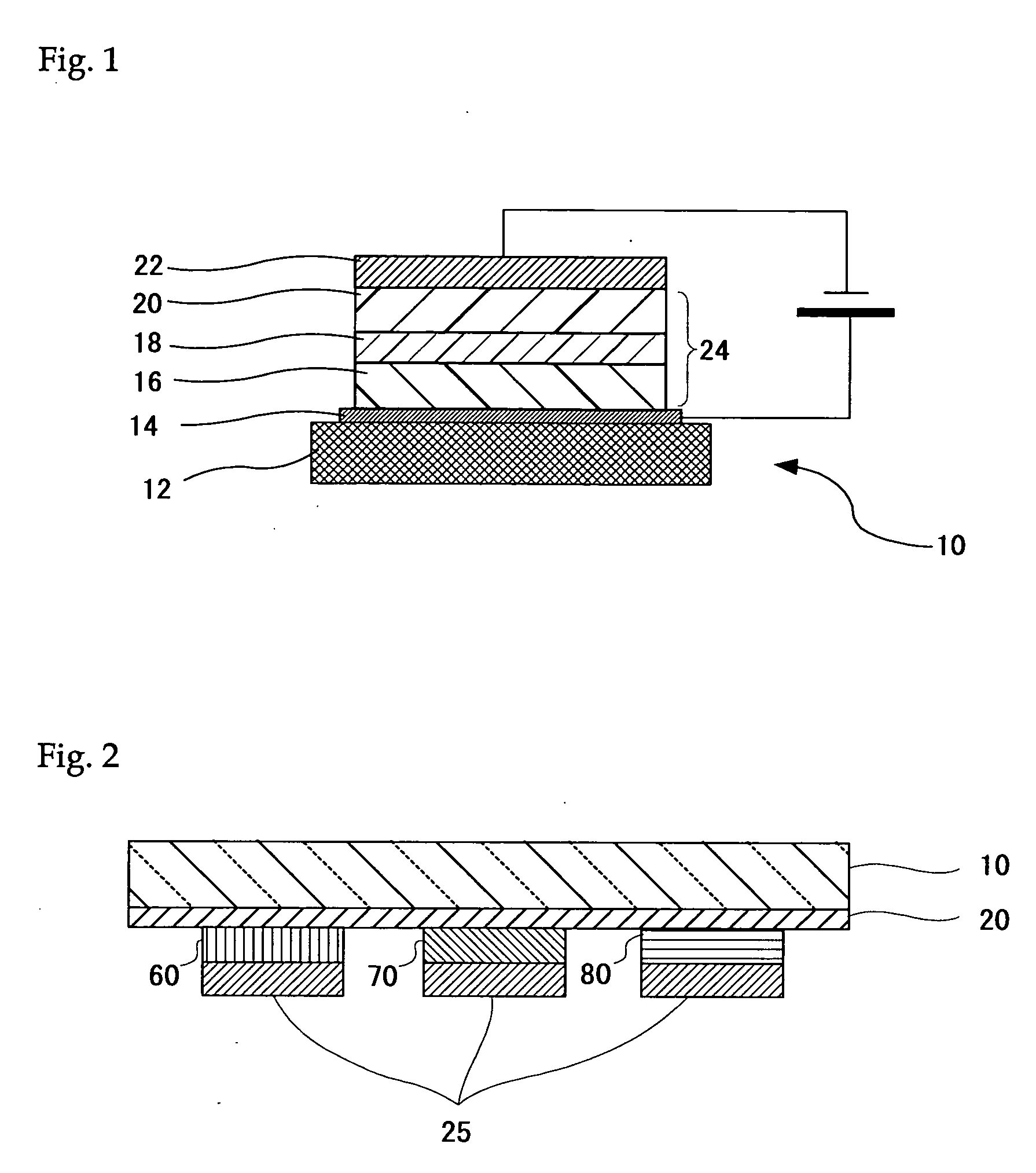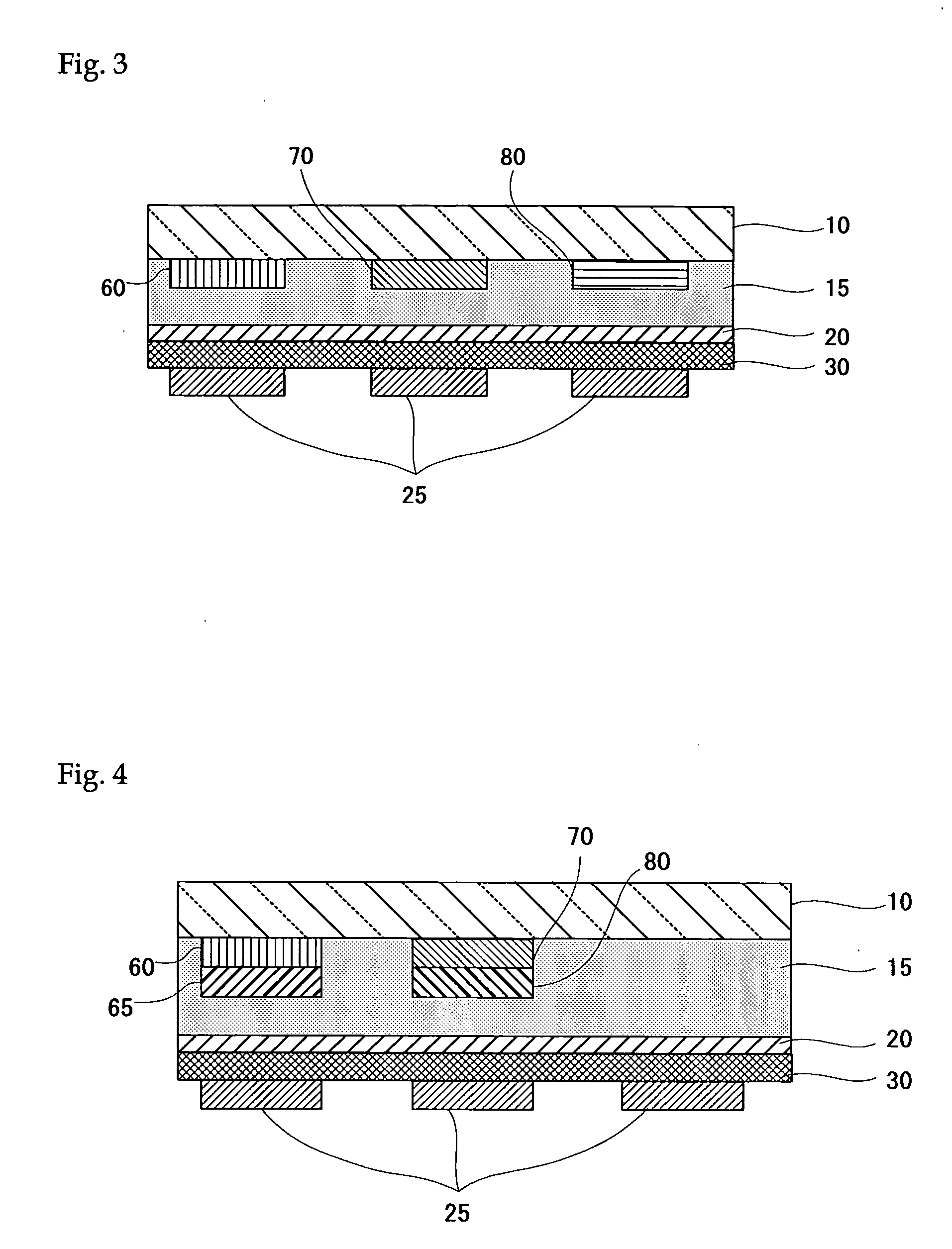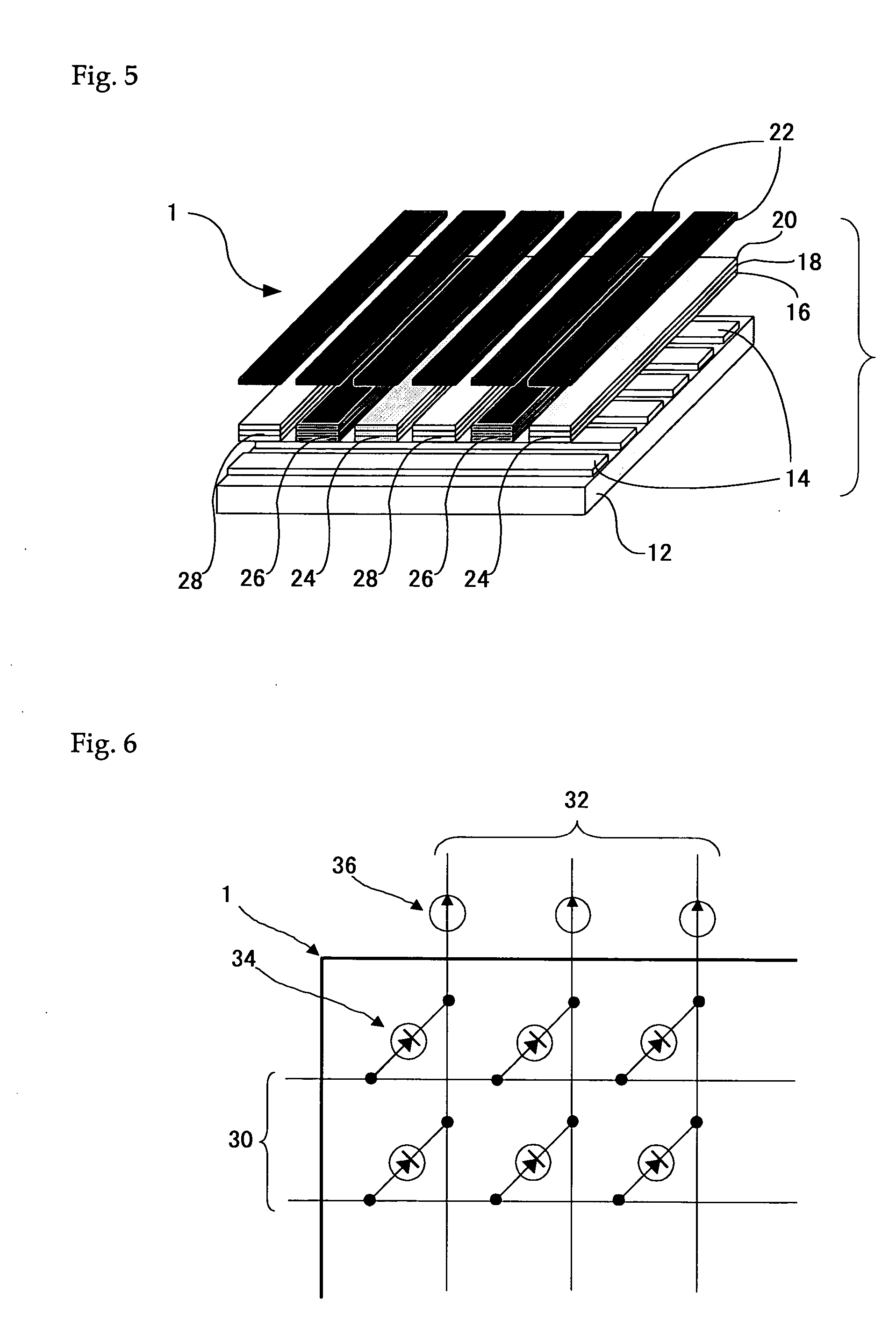Organometallic complex, light-emitting solid, organic electroluminescent element and organic electroluminescent display
a technology of organic electroluminescent elements and complexes, applied in the field of phosphorescence light emission, can solve the problems of low phosphorescence efficiency and narrow selection range of materials, and achieve the effects of high light-emitting efficiency, high durability and high efficiency
- Summary
- Abstract
- Description
- Claims
- Application Information
AI Technical Summary
Benefits of technology
Problems solved by technology
Method used
Image
Examples
synthesis example 1
—Synthesis of Pt(3,5-di(2-pyridyl)toluene)(2-fluorophenol) (expressed as “Pt(dpt)(o2Fph)” hereinafter)—
[0219] (3,5-di(2-pyridyl)toluene) (expressed as “(dpt)” below) was synthesized as the following. That is, specifically, 3,5-dibromotoluene (5.0 g; 20 mmol), 2-tri-n-butylstannylpyridine (26.9 g; 73 mmol), bis(triphenyl-phosphine) palladium dichloride (1.55 g; 2.2 mmol), and lithium chloride (11.7 g; 276 mmol) were put into 130 ml toluene and refluxed for two days. After standing to cool, to 50 ml KF saturated water solution was added. The deposited solid by filtration was taken out, washed with a small quantity of cooled toluene (20 ml×3 times) and dried in a vacuum. The obtained solid was put into a mixed solution of dichloromethane and NaHCO3, and washed thoroughly. The organic layer was separated and after drying with MgSO4 powder, the solvent was removed by an evaporator. A grey color solid object, 3,5-di(2-pyridyl)toluene 2.2 g, recrystallized from dichloromethane, was obtaine...
synthesis example 2
—Synthesis of Pt(3,5-di(2-pyridyl)toluene)(2,6-dimethyl-phenol) (expressed as “Pt(dpt)(odmp)” hereinafter)—
[0222] Except for 2-fluorophenol in synthesis example 1 which was changed to 2,6-dimethyl-phenol, light yellow color solid of Pt(dpt)(odmp) was obtained in the same way as synthesis example 1. The yield was 65%.
synthesis example 3
—Synthesis of Pt(3,5-di(2-pyridyl)toluene)(2-phenylphenol) (expressed as “Pt(dpt)(o2pph)” hereinafter)—
[0223] Except for 2-fluorophenol in synthesis example 1 which was changed to 2-phenylphenol, light yellow color solid of Pt(dpt)(o2pph) was obtained in the same way as synthesis example 1. The yield was 70%.
PUM
| Property | Measurement | Unit |
|---|---|---|
| voltage | aaaaa | aaaaa |
| internal quantum efficiency | aaaaa | aaaaa |
| internal quantum efficiency | aaaaa | aaaaa |
Abstract
Description
Claims
Application Information
 Login to View More
Login to View More - R&D
- Intellectual Property
- Life Sciences
- Materials
- Tech Scout
- Unparalleled Data Quality
- Higher Quality Content
- 60% Fewer Hallucinations
Browse by: Latest US Patents, China's latest patents, Technical Efficacy Thesaurus, Application Domain, Technology Topic, Popular Technical Reports.
© 2025 PatSnap. All rights reserved.Legal|Privacy policy|Modern Slavery Act Transparency Statement|Sitemap|About US| Contact US: help@patsnap.com



